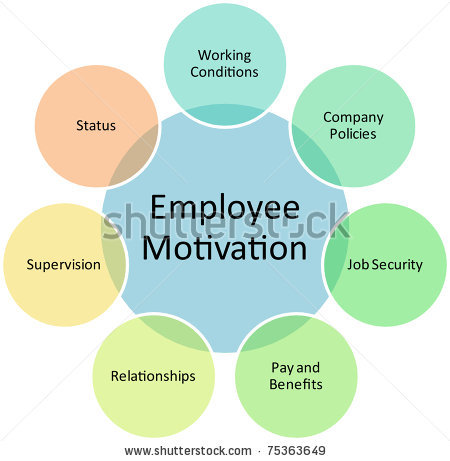“Employees who believe that management is concerned about them as a whole person – not just an employee – are more productive, more satisfied, more fulfilled. Satisfied employees mean satisfied customers, which leads to profitability.” –Anne M. Mulcahy
The urge within a person stimulating him or her to action; having been derived from the word “Motive”; being defined as an active form of a craving or of a need which in essence to be complied with; an inner psychological force activating and compelling a person to behave in a particular manner, motivation – a key to organizational development and efficiency.
With a great assistance in building up the image of the organization, it’s considered to be the backbone of good industrial relations. Due to its course of action, the employee directs himself, to a great extent, for the accomplishment of organizational objectives. While as a major part of managing process, it’s an indicative, that, a highly motivated manager works more efficiently and effectively by making goal-directed efforts and his level of producing desired results tends to be higher than that of a person who is not. Motivation is a source for those who dream of success in their ambitions and who wish to pay for their dreams the hard work and sincerity.
A manager, in general, has to have the work done by others, these others are resources and human assets; they are to be motivated that they can succeed in their organizational goals. The process helps the manager in analysis and comprehending human behavior, finding out the ways to enthuse the employees with the intention that the considered necessary working behavior as well as the attainment of set goals be ascertained.
Motivation framework, originated from the needs, is a good starting point with the aim of figuring out how people chose certain behaviors. Since there exists a host of needs and that they are at variance, the contentment of a need gives rise to the identification of other needs. So is the cycle of motivation reiterated constantly – varying from person to person and time to time. Additionally, the process is influenced by personality traits, learning abilities, perception and competence together with individuals; as such understanding human motivation is crucial and decisive. Motivation helps the managers to keep an eye on what makes people work and how they are to be motivated. There are several theories available on the subject of motivation to assist mangers and to get better insight into human behavior. The organization or the managers making an effort to enhance the motivation can draw on any of the theories or approaches.
According to Moslow’s theory, people are motivated to satisfy these levels of needs. (1) Psychological: [Food, water and air, Sex] (2) Job-Safety/Security: It is satisfied in the work place by job continuity, adequate insurance and retirement benefit package etc. (3) Social: Relating to the social aspect of human life, need for love and affection, to be satisfied by a combination of family and community relationships outside the work. (4) Esteem: Self-image/self-respect and recognition and respect from others.(5) Self- Actualization: At the top, indicating one’s potential for continued growth and individual development after the other needs are fulfilled.
The dual structure need based approach developed by Frederick Herzberg, generally known as two factors theory points out the factors influencing satisfaction are called motivation factors and those causing dissatisfaction, hygiene or maintenance factors. Hygiene factors: Company Policies, Salary, Job Security, Personal life and status. Motivation factors: Achievement, Recognition, Advancement and the possibility of personal growth. Herzberg recommends focusing on different set of factors to increase motivation by improving opportunities for advancement, recognition and growth. Job enrichment has exclusively been put in a good word for by Herzberg as a means of enhancing the availability of motivation factors.
What, above and beyond, has been enlightened in the light of theories and approaches, there are a few things to be considered good words to supplement and strengthen the process of motivation in the organization, such as: Working environment should be humanized with due respect – hence the need to treat each employee as an individual. There should be encouragement to both personal and departmental goal setting. Consistency should be maintained in the work as well as in relations to others. Personal interest must be shown to the people who work for the organization. If committed by A, mistakes be admitted that it’s likely lesser that B hide his own mistakes. Unpleasant assignments ought not to be handed over brusquely. In case of these, the subordinates should be given enough time to be prepared well in advance. Besides, a constant support from the superiors should be offered as and when needed.
Let the emphasis be shifted to this pragmatic approach letting the involvement of management be towards the steady enhancement of positive motivation in the organization, so that the success would continue sanguinely ad infinitum.
Written by:
K. A. Fareed (Fareed Siddiqui)
Writer, Trainer, Author, Blogger, Software Developer
BBA, MBA-Finance, MPhil-Financial Management, (PhD-Management)
MA-English, MPhil-English
Post Graduate Diploma in Computer Applications and Programming
Certificate course in English language proficiency
Level 1 – Leadership and Management ILM – UK
Pursuing CMA-USA
Individual Member of Institute of Management Consultants of India
